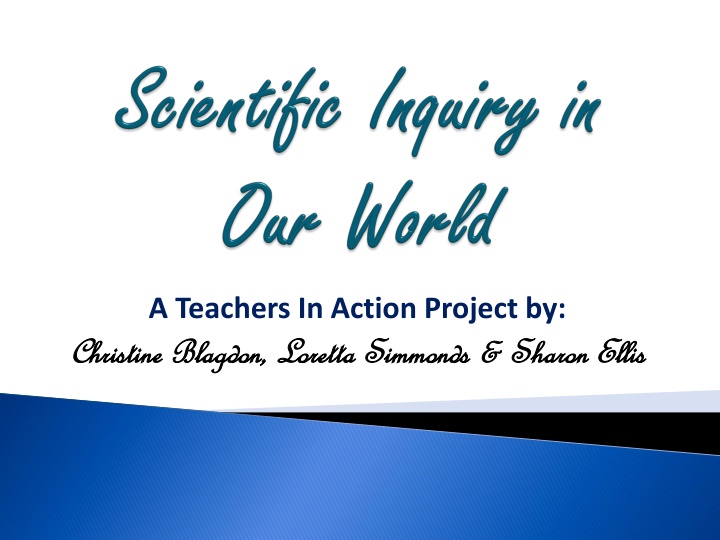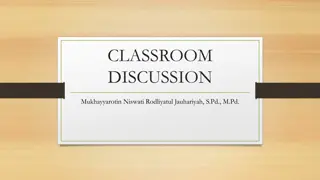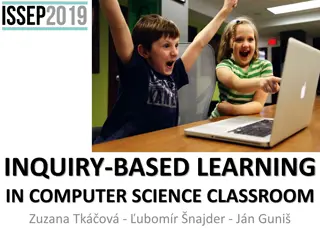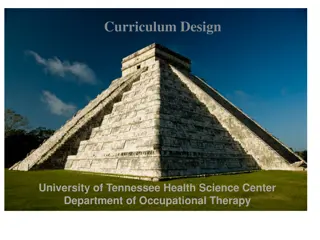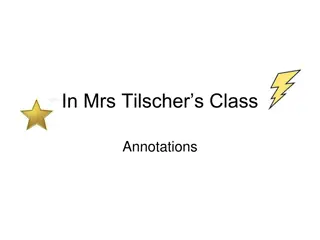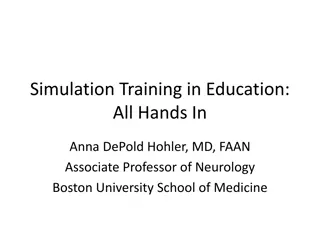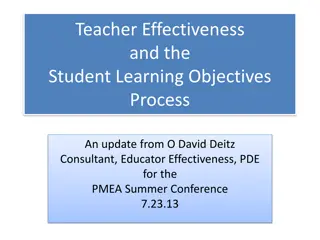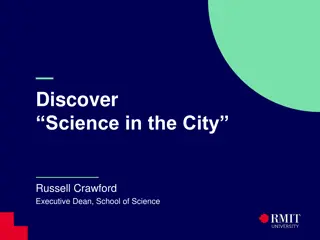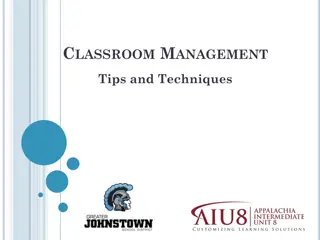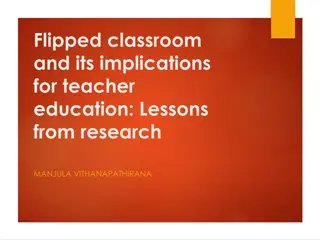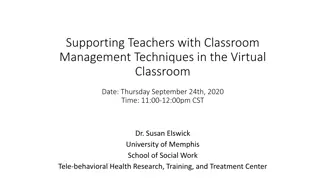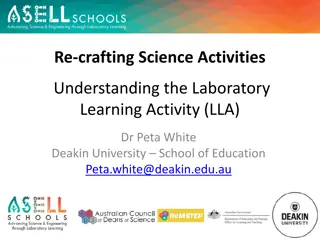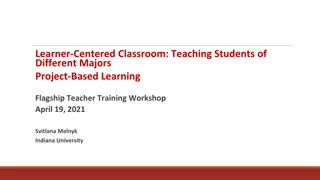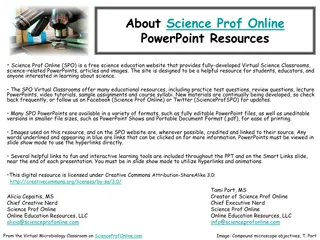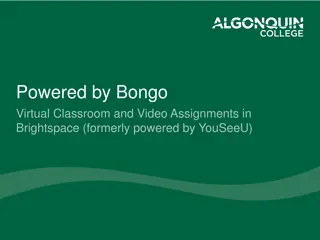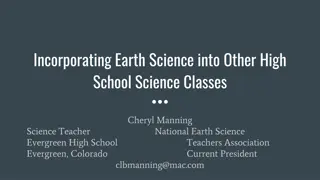Enhancing Science Learning Through Hands-On Experiences in a Diverse Classroom
Three passionate teachers from Anthony Paddon Elementary in Musgravetown, Christine Blagdon, Loretta Simmonds, and Sharon Ellis, joined forces to address student motivation in science. With backgrounds in Kindergarten, Grade Two, and Grade 5, they aim to engage their diverse group of learners in immersive hands-on activities. Situated in a historic Newfoundland community, the educators bring together their years of experience to create a dynamic learning environment that fosters curiosity and excitement for science.
Download Presentation

Please find below an Image/Link to download the presentation.
The content on the website is provided AS IS for your information and personal use only. It may not be sold, licensed, or shared on other websites without obtaining consent from the author.If you encounter any issues during the download, it is possible that the publisher has removed the file from their server.
You are allowed to download the files provided on this website for personal or commercial use, subject to the condition that they are used lawfully. All files are the property of their respective owners.
The content on the website is provided AS IS for your information and personal use only. It may not be sold, licensed, or shared on other websites without obtaining consent from the author.
E N D
Presentation Transcript
A Teachers In Action Project by: Christine Christine Blagdon Blagdon, Loretta , Loretta Simmonds Simmonds & Sharon Ellis & Sharon Ellis
The three participants in this TIA project are Sharon Ellis, Christine Blagdon, and Loretta Simmonds. We are teachers at Anthony Paddon Elementary School in Musgravetown which is a K-6 school comprised of approximately 186 students from 15 neighbouring communities.
Musgravetown is located in Goose Bay, Bonavista Bay on Route 233, just past Bunyan s Cove. It is situated in the southwest corner of Bonavista Bay on the northeast coast of the province. First settled in the 1860's by Joseph Greening, it was called 'Muddy Hole', but later received the name, Musgravetown from Sir Anthony Musgrave, who was Governor of Newfoundland during the mid 1800's. Today, Musgravetown is largely an agricultural community consisting mainly of dairy, poultry and root crop farming.
I am a Kindergarten teacher at Anthony Paddon Elementary. I have been an educator for 22 years and have a diverse background of teaching experiences. Presently, I teach both a morning and afternoon Kindergarten class. One group consists of 13 students with 6 girls and 7 boys. The second group has 12 students with 4 girls and 8 boys.
I am a Grade Two teacher at Anthony Paddon Elementary. I have been a teacher for approximately 25 years and have a variety of experiences at the K-6 level. This year my class consists of 16 students with 8 boys and 8 girls.
I am a Grade 5 teacher at Anthony Paddon Elementary. I have been teaching for 17 years and have a wide range of teaching experiences in the primary and elementary grades. I am presently teaching a class of 16 students consisting of 7 boys and 9 girls.
Each of our classrooms are comprised of a diverse group of learners with a variety of interests, learning styles and abilities. However, we believe that all students learn best when they are engaged in hands-on learning experiences. We joined this project because we believed our students were lacking motivation in the science curriculum. It was our hope that through inquiry based learning, students would be more motivated to learn.
Our focus was on inquiry based learning.
We used the unit on Matter to explore this methodology.
Our research questions were: How will scientific inquiry affect my teaching practices in science? How would teaching through scientific inquiry affect student motivation?
Consent forms were sent home to obtain parental consent for this research project. One from Memorial University of Newfoundland and one from our school.
We read literature and articles provided by the MUN Leadership Team. In addition, we read articles we found on our own. A one day institute was held in the Fall at Memorial University for TIA participants. In addition, we participated in a full day information session with Dr. Karen Goodnough and Mr. Tom Walsh from the MUN Leadership Team, as well as, Mr. Dan O Brien from the Vista Regional District Office.
Regular meetings were held throughout the duration of our project with Mr. Tom Walsh. The Teachers in Action participants met several times to collaborate on ideas, plan lessons and activities, and gather materials.
Surveys were created to determine our students areas of interest in science and how they felt about learning science. The information obtained from this survey helped us to create learning experiences that incorporated group work and hands on learning experience through an inquiry based approach.
Our science curriculum outcomes were analyzed to plan activities which focused on this methodology of learning. Students kept work samples and responses in a science folder. Their feedback and observations were also included in these folders. Conferences were held with students regarding learning and motivation
In preparation for our research project, we read a number of articles on inquiry based learning and student motivation. We were also provided with opportunities to view videos on these topics. To ensure validity and reliability in our findings, we triangulated our data collection. Information was collected from several sources such as observations, interviews, surveys, work samples, videos, and photographs.
Lego Activity I Spy Role Play Scavenger Hunt Discussion 1. 2. 3. 4. 5.
Role Play I Spy
2. Melting Ice-cube in Warm Water 3. Balloons filled with Solids, Liquids and Gases
5. Mixing Liquids and Solids (Juice Crystals, Baking Soda, Dish Liquid etc.,)
6. The Liquid Race 7. Mixing Liquids and Liquids
8. Floating and Sinking 9. Building a Floater
10. Orange Peel versus No Orange Peel, Diet Cola and Regular Cola 11. Melt an Ice Cube Game
Student enthusiasm increased due to hands on activities. Comments were made on a daily basis such as Do we have science today? Can we have science? Do we have time to do more centers? Man, I didn t think science could be this much fun! Such commentary is a true testament of their love of learning science through an inquiry based approach.
Kindergarten Pre-Survey 100% of the Kindergarten students agreed that science was fun When asked the question What is your favorite way to learn science? , 21% of the students said playing around with materials . Post-Survey 100% of the Kindergarten students agreed that science was fun. When asked the question What is your favorite way to learn science? , 46% of the students stated that they liked hands-on activities.
Grade Two On the pre-survey, 8% of grade 2 students indicated that they engaged in Science experiments on a regular basis whereas on the post-survey 80% indicated that they participated in Science experiments regularly. This same group of students grew from 54%-87% on the statement I like Science from the pre-post survey.
Grade Five At the grade 5 level, pre-survey results indicated 100% of students felt that experiments were rarely completed in the classroom. Post-survey results showed that 100% of students felt that experiments were often completed in their classroom.
Students were actively engaged. Regardless of their varying learning abilities and styles, the students were motivated and engaged in the science activities. All students met with success as they carried out their fun activities.
Through collaboration and small group work, it was evident that students supported and encouraged each other.
In Kindergarten, the pre-survey indicated that 96% of students enjoyed working in small groups. On the post-survey, 100% of the children agreed that they liked group work. On a pre-survey, 46% of grade 2 students indicated that they liked to work in groups. Post-survey results showed that 93% of children liked to work in groups. At the grade 5 level, pre-survey results indicated that 86% liked to work in groups whereas 100% of students stated they liked group work in the post-survey.
All students could be risk-takers since such learning activities created a safe environment for all. Students were able to demonstrate their knowledge through a variety of means rather than just paper-pencil tasks. In student written responses, it was evident that they were somewhat reluctant to expand on their thinking. Their reflections were somewhat limited and did not truly reflect their level of understanding of what they learned. It was noted that students were very excited to move on to the next activity when one was completed. Students really enjoyed the collaboration and small group work.
Utilization of more technology (i.e. Ipads and videos) would be more beneficial in terms of all students becoming even further engaged and would provide them with another means to demonstrate their learning.
Initially we believed that we could begin the inquiry approach providing very little teacher direction and questioning. However, as stated in the article The Many Levels of Inquiry (Banchi and Bell, 2008) this isn t the case. They pointed out that Elementary students cannot be able to design and carry out their own investigations. In fact, most students regardless of age, need extensive practice to develop their inquiry abilities and understandings to a point where they can conduct their own investigations from start to finish (p.26).
Another consideration for next time would be to run the same activity for all students at the same time as opposed to three or four different centers. Oftentimes, students predictions were influenced by their previous observations of other students. By running the same center we feel it would allow for more in-depth explanations and explorations.
Children were engaged and motivated Many students carried their enthusiasm for science home There was positive feedback from parents and children Scientific inquiry catered to all learning styles (inclusive learning approach) All students had the opportunity to contribute their understandings
Time-consuming Classroom environment issues (no sink in two classrooms) Wondering if younger children accurately understood the questions asked Relinquishing teacher control Recording observations (taking notes) Videotaping Developing an appropriate survey to adequately reflect students levels of motivation
